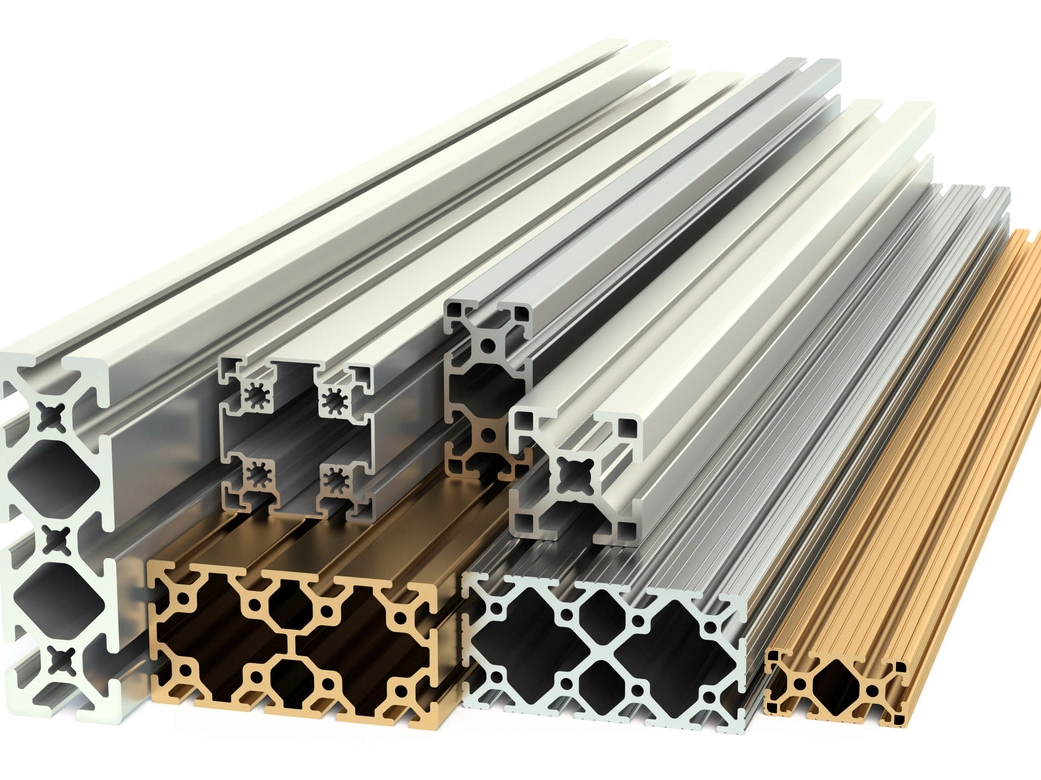
Introduction
Aluminum is a versatile metal widely used in various industries due to its lightweight, strength, and corrosion resistance. Understanding whether an aluminum product is cast or extruded is crucial for applications that demand specific mechanical properties and fabrication methods. In this comprehensive analysis, we delve into the distinguishing features of cast and extruded aluminum, providing insights into their manufacturing processes, properties, and applications. This knowledge is essential for engineers, designers, and manufacturers who aim to optimize material selection for their projects, especially when considering Aluminum Extrusion techniques.
Manufacturing Processes of Cast and Extruded Aluminum
The primary difference between cast and extruded aluminum lies in their manufacturing processes. Casting involves pouring molten aluminum into a mold to achieve the desired shape upon solidification. This process allows for complex geometries and is suitable for producing large components with intricate designs.
Extrusion, on the other hand, involves forcing aluminum billets through a die under high pressure to create objects of a fixed cross-sectional profile. This process is ideal for producing uniform, continuous shapes such as rods, tubes, and channels. The use of Aluminum Extrusion enables the creation of precise and consistent profiles essential for structural applications.
Characteristics of Cast Aluminum
Cast aluminum typically exhibits a rougher surface finish due to the casting molds' textures and the casting process's nature. It often contains porosity or small voids within the material, resulting from gases trapped during solidification. These characteristics can affect the mechanical strength and fatigue resistance of the final product.
Moreover, cast aluminum alloys are generally tailored to enhance fluidity and fill molds effectively. They may contain higher silicon content, which lowers the melting point and improves casting performance but can reduce ductility and toughness.
Characteristics of Extruded Aluminum
Extruded aluminum is known for its fine-grained microstructure and superior mechanical properties resulting from the deformation process during extrusion. This process aligns the metal's grain structure along the extrusion direction, enhancing tensile strength and making it suitable for load-bearing applications.
The surface finish of extruded aluminum is smoother compared to cast aluminum, and it exhibits excellent dimensional accuracy. The absence of porosity contributes to its higher structural integrity, making it a preferred choice for components requiring precision and reliability.
Methods to Distinguish Between Cast and Extruded Aluminum
Identifying whether aluminum is cast or extruded can be achieved through several methods, including visual inspection, mechanical testing, and chemical analysis. Each method provides different levels of accuracy and may require specialized equipment or expertise.
Visual Inspection
Visual inspection is the most straightforward method. Cast aluminum often has a rougher surface with evidence of parting lines or mold marks, while extruded aluminum features smoother surfaces with consistent profiles. Extruded products may also show longitudinal lines along the direction of extrusion.
Mechanical Properties Testing
Mechanical testing, such as hardness tests or tensile strength measurements, can provide insights into the aluminum's type. Extruded aluminum typically exhibits higher tensile strength and hardness due to work hardening during the extrusion process. In contrast, cast aluminum may display uniform properties in all directions due to its isotropic nature.
Chemical Composition Analysis
Analyzing the chemical composition can also aid identification. Cast aluminum alloys often contain higher amounts of silicon and other alloying elements to improve casting performance. Spectroscopic analysis can reveal these differences, confirming whether the aluminum is cast or extruded.
Applications of Cast and Extruded Aluminum
Understanding the typical applications of cast and extruded aluminum can further assist in identification. Cast aluminum is commonly used in automotive engine blocks, pump housings, and other components where complex shapes are required. Extruded aluminum finds applications in construction for window frames, railings, and structural components where the strength and precision of Aluminum Extrusion are advantageous.
Advantages of Cast Aluminum
- **Complex Shapes**: Ability to produce intricate designs and complex geometries.
- **Cost-Effective for Large Parts**: Economical for large components due to lower machining requirements.
- **Versatility**: Suitable for a wide range of sizes and weights.
Advantages of Extruded Aluminum
- **Superior Mechanical Properties**: Enhanced strength and durability due to grain alignment.
- **Precision**: High dimensional accuracy and smooth surface finishes.
- **Customization**: Ability to create specific profiles tailored to application needs.
- **Efficiency in Mass Production**: Ideal for producing long lengths of uniform cross-sections efficiently.
Case Studies and Practical Examples
Examining real-world examples can illustrate the practical differences between cast and extruded aluminum. For instance, in the aerospace industry, extruded aluminum components are favored for their strength-to-weight ratio and reliability, essential for structural parts. Conversely, cast aluminum is often used for components like brackets or housings where complex shapes are necessary but subjected to lower stress.
Automotive Industry Application
In automotive manufacturing, the distinction is clear. Cast aluminum is used for engine blocks and transmission housings, where the complexity of shape is paramount. Extruded aluminum is utilized for structural components, such as frames and crash management systems, where the consistent properties provided by Aluminum Extrusion are critical.
Expert Opinions and Industry Insights
Industry experts emphasize the importance of selecting the appropriate aluminum type based on the application's requirements. Dr. James Allen, a metallurgical engineer, notes that \"the choice between cast and extruded aluminum can significantly impact the performance and lifespan of a component. Understanding the inherent properties of each is essential for optimal design.\"
Additionally, advancements in extrusion technology have expanded the capabilities of extruded aluminum, making it a viable alternative in applications traditionally reserved for cast aluminum.
Conclusion
Differentiating between cast and extruded aluminum is fundamental for engineers and manufacturers aiming to utilize aluminum's full potential. By understanding the manufacturing processes, properties, and applications of each type, one can make informed decisions that enhance product performance and cost-efficiency.
Whether the goal is to exploit the intricate designs possible with casting or the strength and precision offered by Aluminum Extrusion, recognizing the differences ensures the right material is chosen for the right application.
References
- Davis, J. R. (1993). _Aluminum and Aluminum Alloys_. ASM International.
- Aluminium Federation. (2020). _Understanding the Aluminum Extrusion Process_.
- Miller, W. S., Zhuang, L., Bottema, J., & Wittebrood, A. J. (2000). Recent development in aluminum alloys for the automotive industry. _Materials Science and Engineering: A_, 280(1), 37-49.
"}









